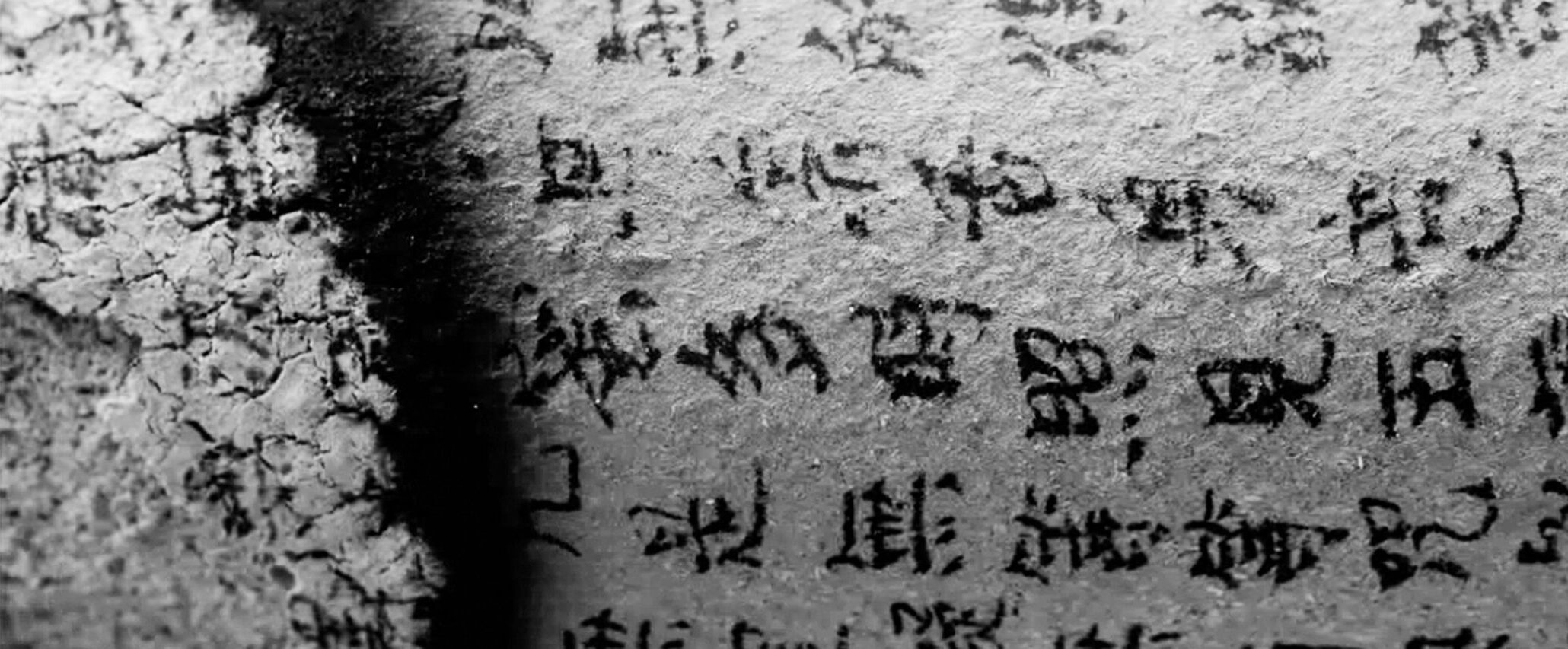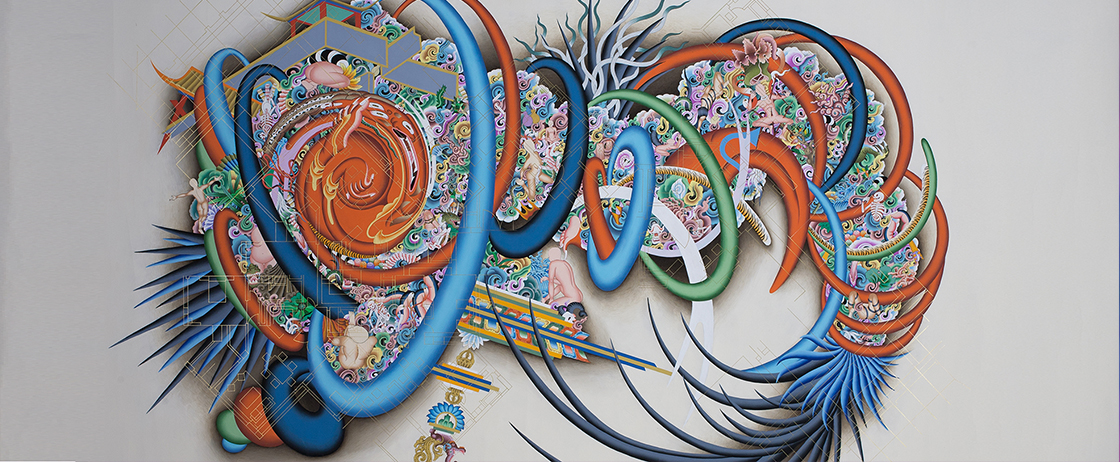
When a person makes an offering they often have a specific thought or aspiration in mind, implying an intention as well as a wish. In Shrine Room Projects: Wishes and Offerings, contemporary works by Tsherin Sherpa and Charwei Tsai reflect sacred sites, objects, and practices, complementing the Tibetan Buddhist Shrine Room located at the center of the gallery. Offerings play an important role in Buddhist practices and culture.
Tsherin Sherpa (b. 1968, Kathmandu, Nepal)
Following the devastating earthquake that struck Nepal on April 25, 2015, Tsherin Sherpa returned to his home city of Kathmandu and created Wish-fulfilling Tree (2016). He worked with local craftsmen to create a seven-layer bronze mandala, an idealized representation of the cosmic universe. Both a memorial to the destruction wrought by the earthquake and a wish for the future, the mandala is surrounded by local debris and found objects, representing the types of household goods destroyed during the natural disaster and creating a relationship between cosmic aspiration and earthly reality. The notion of a wish fulfilling tree is found across Hinduism, Buddhism, and Jainism to satisfy worldly and celestial desires. In Sherpa’s installation, it alludes to the Nepalese’s practical need and wish for economic compensation post-earthquake, symbolized in an earlier iteration of this work by signed rupee notes on the mandala.
Complementing this installation are two paintings from Sherpa’s UFO (Unidentified Fettering Organization) series (2016), featuring chaotic swirls and clouds surrounding historic-looking structures. Both are painted in a contemporary style that alludes to the artist’s training in traditional thangka painting.
Charwei Tsai (b. 1980, Taipei, Taiwan)
Charwei Tsai’s video shows the burning of incense, which are offerings of pleasant smell that also fulfill other purposes, as the artist inscribed a mantra in traditional Chinese on the surface of the incense. It is the mantra of The Heart Sutra, one of the most important Buddhist scriptures. The recitation of this mantra is believed to have the power to remove all negativities in the mind of the person reciting it and the surrounding physical reality. When burned with the incense, the mantra releases its power into the environment, increasing the intentional aspiration of the artist.
Discussing the act of writing mantras on the spiral incense, Tsai once noted, “If I expanded my aspirations, thinking may all who see this work be relieved of their sufferings in some ways—then the work would become much more meaningful.” The offering of her labor, the pleasant smell released into the air, and the liberating power of the mantras are a wishful aspiration for the benefit of others.
Curated by Beth Citron and Elena Pakhoutova
Support for Shrine Room Projects: Wishes and Offerings is made possible by Fred Eychaner, Ann and Matthew Nimetz, Christopher J. Fussner, Tulku Tsultrim Pelgyi, Lois and Bob Baylis, Audio-Technica, and contributors to the 2018 Exhibitions Fund.





